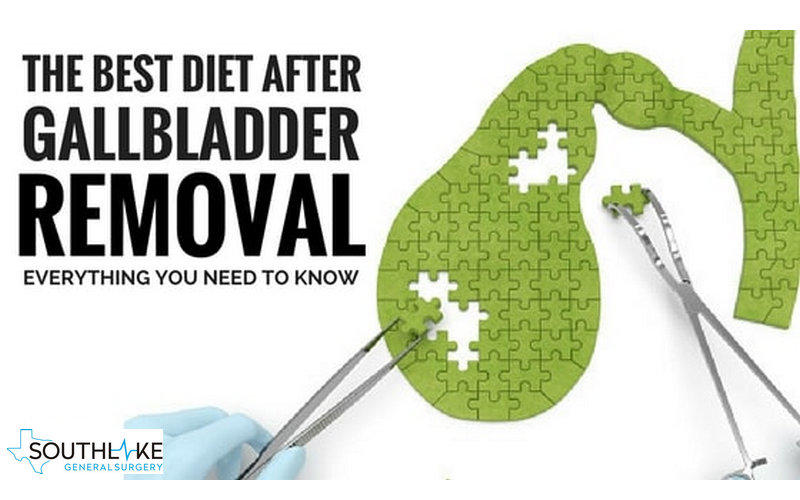The Gallbladder is a pear-formed organ that contains bile and this liquid helps digest food. In case the gallbladder stops functioning or causes inflammation, it develops gallstones which can be as little as a grain of rice or as large as a golf ball.
If an individual has gallstones, it doesn’t heal on its own. They begin to damage or cause other symptoms. Based on your health condition and symptoms, a general surgeon will recommend gallbladder surgery. This surgical procedure is also known as Cholecystectomy. It is found that 80% of the individuals who have gallstones will need surgery.
How many types of gallbladder surgeries are there?
To treat the gallstones, the doctor may suggest any one of the following surgeries:
Open Gallbladder Surgery: Under this surgical procedure, a general surgeon will make one large incision of 6-7 inches on the stomach to remove the gallbladder. The doctor may switch or recommend Open surgery if a patient has excess bleeding. It may also advise if an individual has a serious gallbladder disorder, or an individual is in the last trimester of pregnancy.
Laparoscopic gallbladder removal surgery or cholecystectomy: Under this surgical procedure, a general surgeon makes 3-4 small incisions on your abdomen to insert a small thin tube that has a mini camera on top called a Laparoscope. This helps the surgeon to locate the gallbladder and remove it. Once the gallbladder is removed surgeon closes the incision areas with sutures. It is also known as Keyhole Surgery, which includes minimal invasion, less pain, fewer scars, and faster recovery.
To perform any of these surgeries, the doctor uses general anesthesia and you will be at sleep throughout the surgery without any pain.
When do you need gallbladder surgery?
If an individual doesn’t have any side effects or any discomfort, there is no need to have gallbladder surgery. Your doctor will only recommend gallbladder surgery if a gallstone is stuck or blocks the bile duct. This condition is known as a “gallbladder attack”. Under this condition, an individual will feel intense pain in the stomach that lasts for hours.
If gallstones don’t receive any treatment they may lead to various severe problems, such as:
- Gallstones in the gallbladder (cholelithiasis)
- Gallstones in the bile duct (choledocholithiasis)
- Gallbladder inflammation (cholecystitis)
- Large gallbladder polyps
- Pancreas inflammation (pancreatitis) due to gallstones.
Before any surgery, the doctor would prescribe for few medical examinations to check the severity of gallstones. This may include:
- Blood test
- Chest & Abdomen X-ray
- Ultrasound
- MRI HIDA (hepatobiliary iminodiacetic acid) scan
What are the risks of gallbladder surgery?
People can live without a gallbladder once it is removed after surgery. The liver produces much bile to help digest the food.
Surgeons accept gallbladder surgery as safe, however, a few issues can in any case emerge. These may include:
Problems with anesthesia
- Infection after surgery
- Issues with anesthesia
- Bleeding
- Leakage of bile
- Damage to a bile duct, intestine, bowel, or blood vessels
- Blood clots
- Heart problems
- Pneumonia
- Swelling
Additionally, the risk associated with surgery can also lead to “post-cholecystectomy syndrome” (PCS). It can occur if any gallstones are left in the bile duct or bile spills into the stomach. The side effects of PCS are like those of gallstones. They incorporate stomach pain, diarrhea, and acid reflux.
Recovery after gallbladder surgery
Recovery after gallbladder surgery relies upon the kind of surgical procedure you have.
Open surgery will take about 6-8 weeks to completely heal and you will have to stay in the hospital for a few days.
Laparoscopic gallbladder surgery takes less time to heal as compared to open surgery. Many individuals who have gone under this procedure can discharge on the same day from the hospital. You can resume your daily activities within 2weeks.
Lifestyle and diet changes after gallbladder surgery
Having cholecystitis implies you should roll out significant improvements to your eating routine. Upon recuperation, eating five to six small meals daily is suggested. This permits the bile in your digestive tract to standardize. One large meal can lose the system and produce a spasm in the gallbladder and bile ducts.
Adhere to a low-fat meal with lean proteins, like poultry or fish. Stay away from greasy meats, fried food, and any high-fat food sources, including dairy items.
Appointment
For more information on the Gallstone problem, diagnosis, treatment, and consultation. You can contact our healthcare expert at +1(817) 748-0200 and you can also book an online appointment with us.

